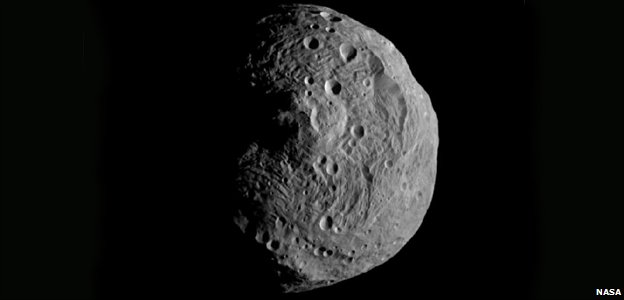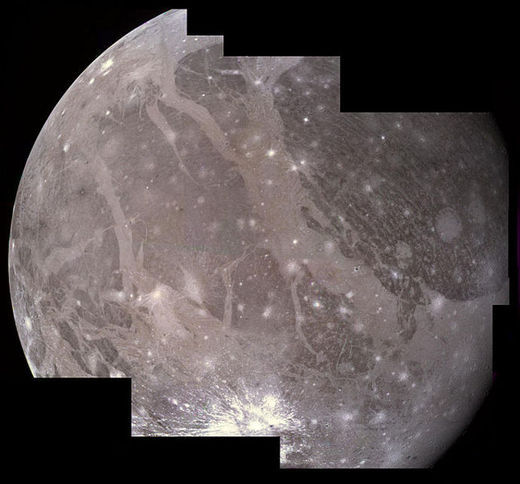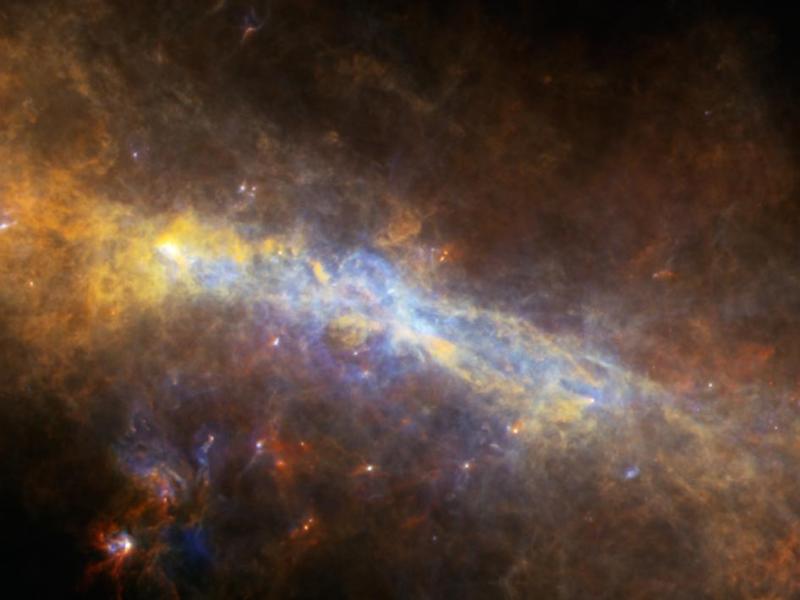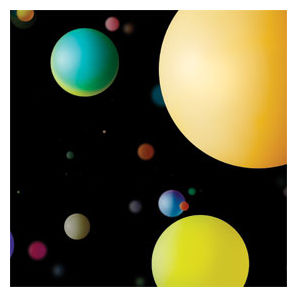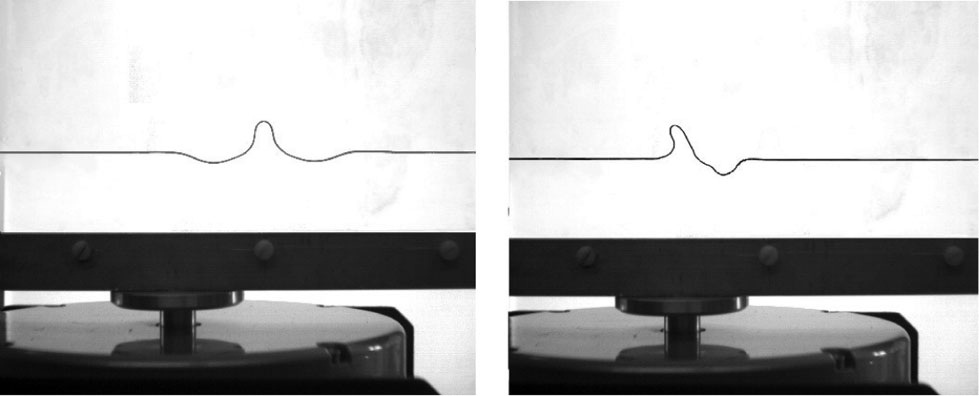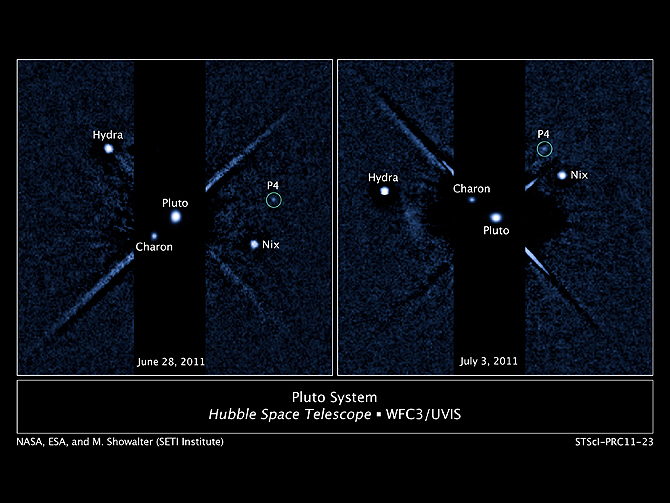
The new moon is the smallest discovered around Pluto. It has an estimated diameter of 8 to 21 miles (13 to 34 km). By comparison, Charon, Pluto's largest moon, is 648 miles (1,043 km) across, and the other moons, Nix and Hydra, are in the range of 20 to 70 miles in diameter (32 to 113 km).
"I find it remarkable that Hubble's cameras enabled us to see such a tiny object so clearly from a distance of more than 3 billion miles (5 billion km)," said Mark Showalter of the SETI Institute in Mountain View, Calif., who led this observing program with Hubble.
The finding is a result of ongoing work to support NASA's New Horizons mission, scheduled to fly through the Pluto system in 2015. The mission is designed to provide new insights about worlds at the edge of our solar system. Hubble's mapping of Pluto's surface and discovery of its satellites have been invaluable to planning for New Horizons' close encounter.
"This is a fantastic discovery," said New Horizons' principal investigator Alan Stern of the Southwest Research Institute in Boulder, Colo. "Now that we know there's another moon in the Pluto system, we can plan close-up observations of it during our flyby."
The new moon is located between the orbits of Nix and Hydra, which Hubble discovered in 2005. Charon was discovered in 1978 at the U.S. Naval Observatory and first resolved using Hubble in 1990 as a separate body from Pluto.
